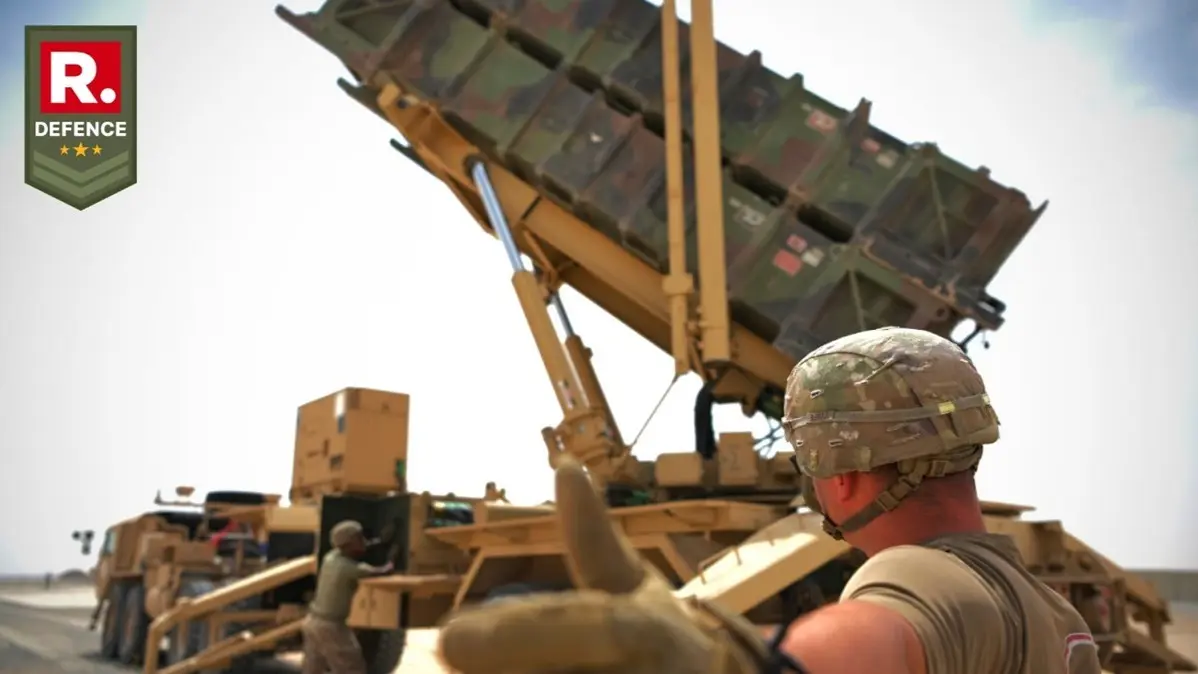Updated 31 March 2025 at 16:39 IST
America’s Golden Dome to Think for Itself, AI to Handle Next-Gen Missile Defense
The U.S. Army is fast-tracking Golden Dome, an AI-driven missile defense system to redefine homeland security by reducing human intervention in air defence.
- Defence News
- 4 min read

California, USA - The U.S. Army is moving fast toward a fully autonomous missile defence system, looking to slash the number of personnel required to operate what could be America’s most advanced homeland shield yet—Golden Dome. With artificial intelligence at the core, the Army is shaping a future where missiles, radars, and interceptors make real-time decisions with minimal human intervention.
Golden Dome, a pet project of former President Donald Trump, is now being modelled on the Guam Defense System, which is expected to go operational by 2027. Taking cues from that program, the Army is now working to make air and missile defence smarter, faster, and more independent, Maj. Gen. Frank Lozano, the service’s Program Executive Officer for Missiles and Space, revealed in an interview at Redstone Arsenal. Speaking on the sidelines of the Association of the U.S. Army’s Global Force Symposium, Lozano made it clear: “We need AI and autonomous systems to take over the heavy lifting.”
From Soldiers to AI: The Shift in Missile Defense
Currently, every launcher, radar, and fire control unit in the U.S. missile defence network requires teams of trained operators. A typical launcher needs at least two or three soldiers to man it, conduct routine checks, and be ready to fire when needed. Golden Dome is about changing that.
“The plan is to move toward containerized missile systems—think of it as a box of rockets instead of a traditional launcher,” Lozano explained. These could be placed above or even below ground, needing less frequent upkeep. Instead of human soldiers stationed around the clock, AI will remotely monitor the systems, with troops checking in only every few weeks.
Advertisement
This is where the Army’s Integrated Battle Command System (IBCS) comes in. IBCS, already being deployed in Guam, is an AI-enabled command centre that links radars, missiles, and interceptors into one real-time network. Golden Dome, will be supercharged with new AI-driven fire control, reducing human decision-making to just a final authorization step before a missile launch.
The “Super Bowl” of Missile Defense is Coming
The Army’s Integrated Fires Test Campaign (IFTC), originally meant to test the Guam missile defence network, is now being retooled to focus on AI and autonomy for Golden Dome. The 2026 IFTC event, dubbed the “Super Bowl” of missile defence, will be the proving ground for these next-gen autonomous systems.
Advertisement

Beyond 2027, the Army wants to be ready. “If we’re called upon to support Golden Dome initiatives, we need AI, remote operations, and autonomous-based formations ready to deploy,” Lozano stated.
The roadmap includes:
- Mapping human decision points in missile defence operations.
- Developing AI algorithms to handle tracking, targeting, and interception.
- Setting up fail-safes, where AI hands decisions back to humans when necessary.
AI won’t be given full control over missile launches, but for tracking, identifying, and prioritizing threats, it will operate independently.
Industry Giants and Startups Join the AI War Effort
This kind of shift needs more than just traditional military contractors—so the Army is opening doors to AI startups and tech firms. At the Global Force Symposium, Lozano met with French defence giant Safran, which already supplies navigation and timing systems for U.S. missile defence programs like Patriot and Precision Strike Missiles. Now, Safran is being brought in to see how AI can replace manual human checks in missile defence operations.
Another key player? Anduril, the high-tech defence startup that recently acquired Numerica, the company behind the Army’s IBCS fire control software. Anduril is now exploring ways to inject AI-driven decision-making into air and missile defence command-and-control systems.

Anduril’s entry signals a new era of defence collaboration, where Silicon Valley-style AI startups play a bigger role in modernizing America’s warfighting capabilities. The Army is also talking to venture capital-backed AI firms and small tech startups, a departure from its usual reliance on massive defence contractors like Lockheed Martin and Raytheon.
For the next six to nine months, the Army will define what it needs from the industry before opening up contract opportunities for AI-driven missile defence systems.
Golden Dome: The Future of U.S. Homeland Security?
Golden Dome isn’t just about upgrading America’s missile shield—it’s about redefining how war is fought and defended. With China, Russia, and North Korea investing heavily in next-gen missiles, the U.S. is betting big on AI-driven defence to keep up.
By bringing in AI-powered fire control, autonomous launch systems, and real-time decision-making algorithms, Golden Dome could become the most advanced homeland missile defence network in history. If it works, it could change the way the U.S. defends its skies—and reshape the future of military AI warfare.
Watch- U.S. Army Air and Missile Defense Command
Published By : Yuvraj Tyagi
Published On: 31 March 2025 at 16:39 IST
